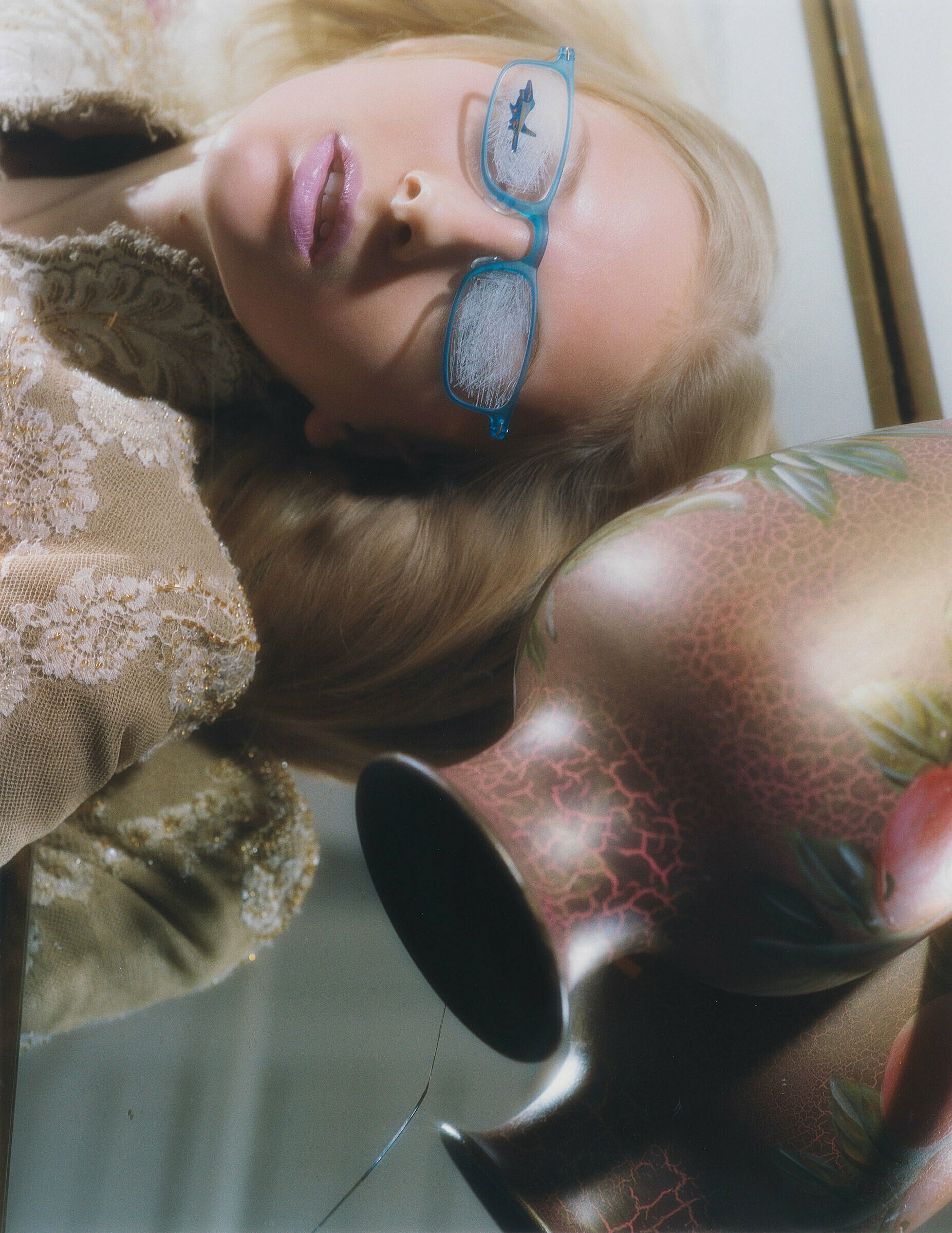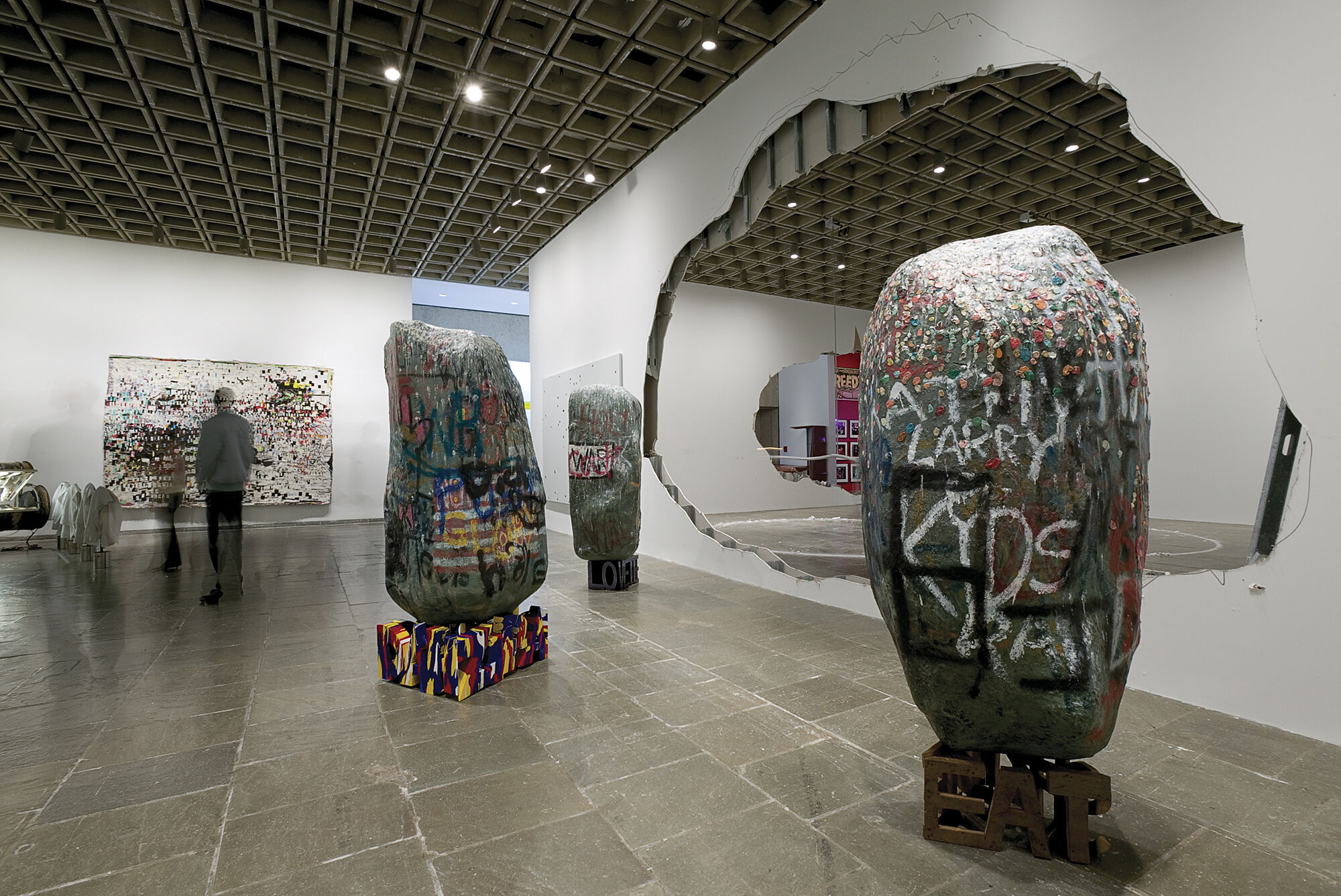Christopher Williams
1956–
Rooted within the technical precision with which Christopher Williams constructs his photographs is a conceptual practice that investigates the medium of color photography itself and the role that it plays in creating social and cultural meaning. Kodak Three Point Reflection Guide © 1968 Eastman Kodak Company, 1968 (Meiko laughing), Vancouver, B.C., April 6, 2005 is part of a series that belongs to a vast photographic project titled Die Welt ist schön (The world is beautiful) that Williams embarked upon in the late 1980s and that included several other series also devoted to specific brands of film, such as Kodak, Fuji, and AGFA. Although not a stock commercial photograph, this image has been carefully staged to appear like one: the cheerful model is set against a plain studio backdrop and her gaze seems fixed on the middle distance, while the image includes an Eastman Kodak color bar, used to help publishers achieve the correct hues in print. The work is made using Kodak film, processing chemicals, and photographic paper, but Williams references the company visually, too: the yellow color of the towels wrapped around Meiko’s head and body is calibrated exactly to match the dominant hue of Kodak’s packaging, a shade that Williams has suggested connotes “warmth, sunshine, spring, domestic bliss.” Color photography is thus linked intimately with the artifice of advertising and consumer culture that shaped the world in 2005 just as it did in 1968, allowing for the precise construction of beauty and the manipulation of emotions as well as images.
Introduction
Christopher Williams (born 1956 in Los Angeles) is an American conceptual artist and fine-art photographer who lives in Cologne and works in Düsseldorf.
Wikidata identifier
Q1087061
Information from Wikipedia, made available under the Creative Commons Attribution-ShareAlike License . Accessed December 18, 2025.
Country of birth
United States
Roles
Artist, conceptual artist, photographer
ULAN identifier
500029979
Names
Christopher Williams
Information from the Getty Research Institute's Union List of Artist Names ® (ULAN), made available under the ODC Attribution License. Accessed December 18, 2025.



